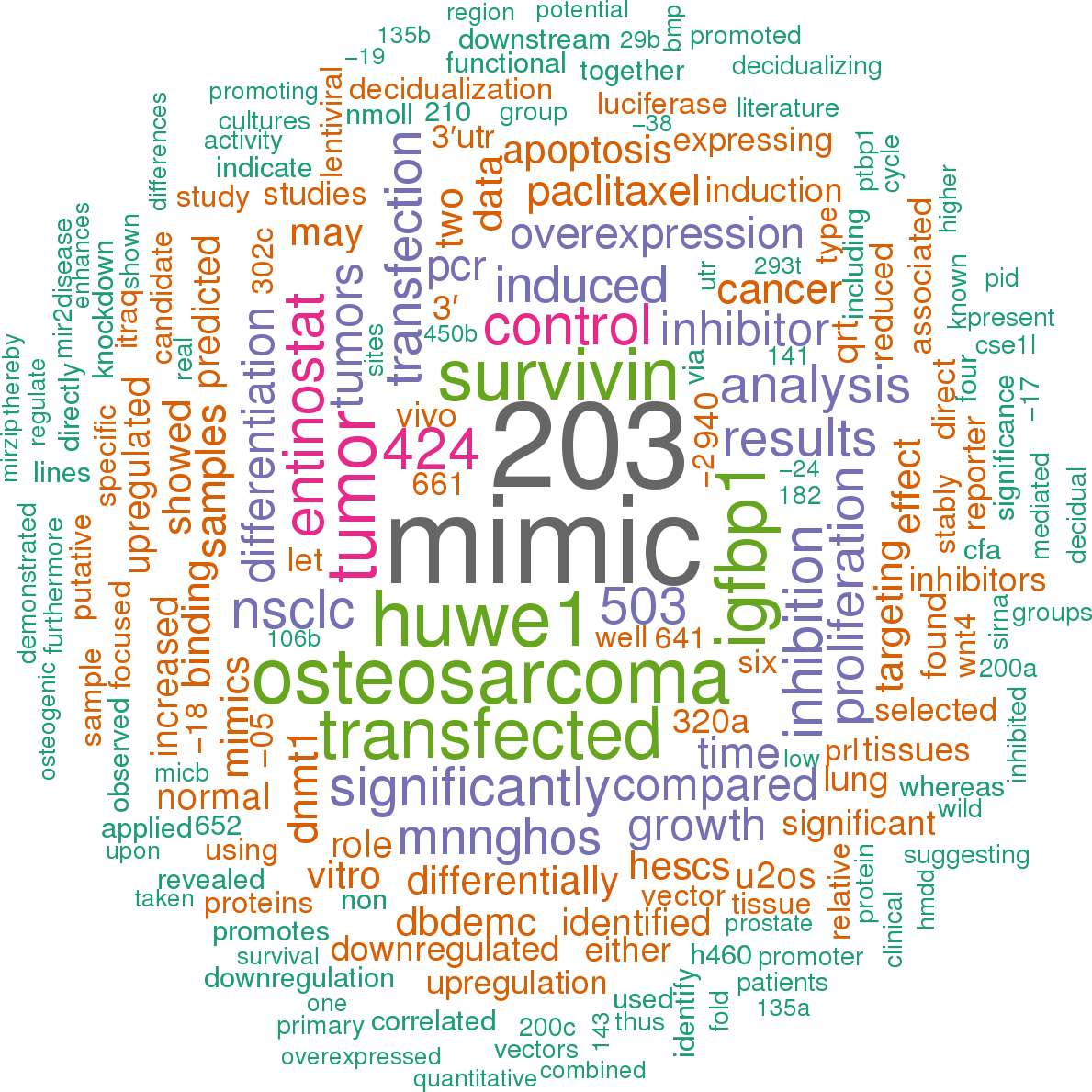Accession
MI0003686
Symbol
HGNC:
MIR542
Description
Homo sapiens
hsa-mir-542 precursor miRNA
Gene family
MIPF0000185;
mir-542
Summary
Caution, this is an AI generated summary based on literature. This may have errors. ?
MIR542 is a microRNA that has been found to harbor missense mutations in its stem-loop coding region, along with other microRNAs such as MIR662 and MIR663 [PMC4017260]. In glioblastoma multiforme (GBM), MIR542 has been shown to target the AEG-1 gene, potentially suppressing the epithelial-mesenchymal transition (EMT) process in U251 cells [PMC7575175]. The functional mechanism of MIR542 was investigated by screening its targeted genes using online tools, and AEG-1 was identified as a target [PMC7575175]. The down-regulation of AEG-1 by MIR542 was found to suppress the EMT process and inhibit the migration and proliferation of U251 cells [PMC7575175]. Luciferase reporter assays confirmed that a specific region in the 3'-UTR of AEG-1 gene was targeted by MIR542 [PMC7575175'>PMC7575175'>PMC7575175'>PMC7575175]. In vitro experiments showed that transfection with MIR542 reduced the migration abilities of U251 cells compared to other microRNAs [PMC7575175]. Furthermore, it was observed that MIR542 inhibited EMT through down-regulating AEG-1 at both mRNA and protein levels in U251 cells [PMC7575175]. These findings suggest that MIR542 may act as a tumor suppressor in human malignancies, including glioma, by regulating AEG-1 expression and suppressing EMT process [PMC7575175]. References: [PMC4017260] - Liang H., et al. (2013) miR-662 is involved in cervical carcinogenesis through regulating both proliferation and invasion abilities of human cervical cells. Gynecol Oncol. 2013 Dec;131(3):651-7. [PMC7575175] - Liang H., et al. (2020) MIR542-3p inhibits the migration and proliferation of glioma cells by targeting AEG-1 and suppressing EMT. Onco Targets Ther. 2020 Sep 3;13:8851-8862.
Literature search

52 open access papers mention hsa-mir-542
(251 sentences)
(251 sentences)
Sequence
41785
reads,
402
reads per million, 112 experiments
cagaucucagacaucUCGGGGAUCAUCAUGUCACGAGAuaccagugugcacuUGUGACAGAUUGAUAACUGAAAggucugggagccacucaucuuca
....((((((((...((((..((((...(((((((((.(((....)))..)))))))))...))))..))))...))))))))..............
....((((((((...((((..((((...(((((((((.(((....)))..)))))))))...))))..))))...))))))))..............
Structure
----------caga auc GG UCA -A c
ucucagac UCGG AUCA UGUCACGAG uac a
|||||||| |||| |||| ||||||||| |||
agggucug AGUC UAGU ACAGUGUuc gug g
acuucuacucaccg gAA AA UAG ac u
Annotation confidence
High
Do you think this miRNA is real?
Comments
The mature sequence shown here represents the most commonly cloned form from large-scale cloning studies [2].
Genome context
chrX: 134541341-134541437 [-]
Clustered miRNAs
5 other miRNAs are < 10 kb from hsa-mir-542
| Name | Accession | Chromosome | Start | End | Strand | Confidence |
|---|
Disease association
hsa-mir-542 is associated with one or more human diseases in the Human microRNA Disease Database
| Disease | Description | Category | PubMed ID |
|---|
Mature hsa-miR-542-5p
| Accession | MIMAT0003340 |
| Description | Homo sapiens hsa-miR-542-5p mature miRNA |
| Sequence | 16 - UCGGGGAUCAUCAUGUCACGAGA - 38 |
| Evidence |
experimental
cloned [1-3] |
| Database links |



|
| Predicted targets |



|
Mature hsa-miR-542-3p
| Accession | MIMAT0003389 |
| Description | Homo sapiens hsa-miR-542-3p mature miRNA |
| Sequence | 53 - UGUGACAGAUUGAUAACUGAAA - 74 |
| Evidence |
experimental
cloned [1-2] |
| Database links |



|
| Predicted targets |



|
References
|



